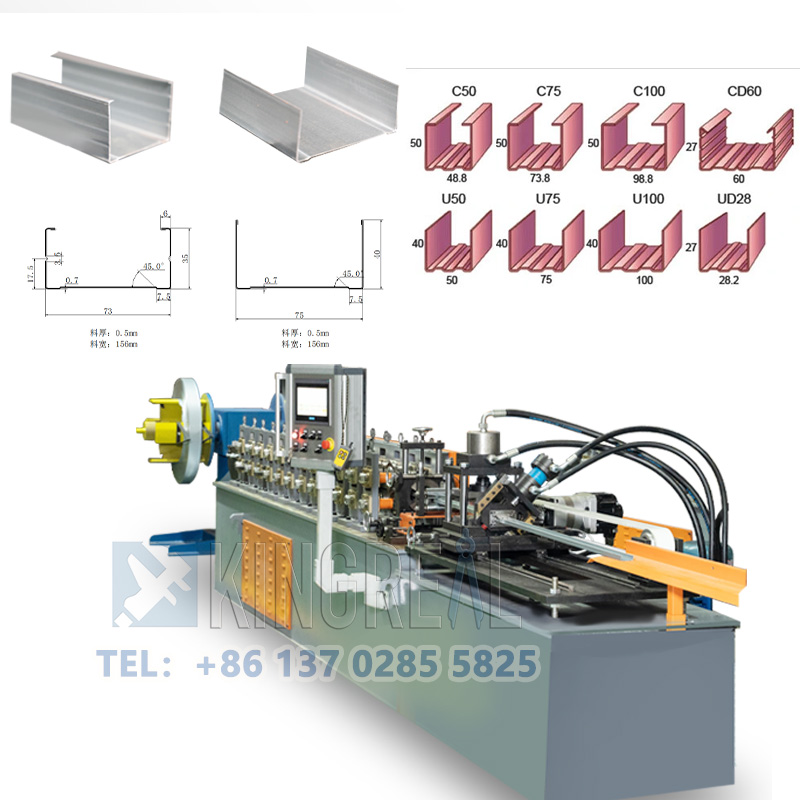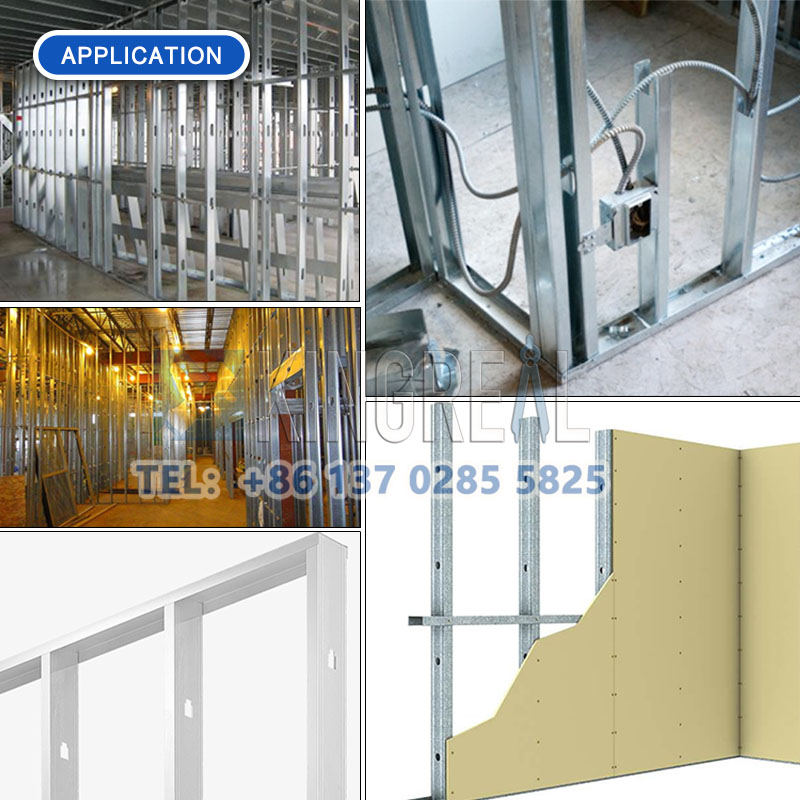
How does a stud and track machine work?
2024-12-05 17:16Stud and track machine is an important equipment in the field of building materials production. It is mainly used to produce drywall studs and tracks used in construction. These are widely used in the installation of suspended ceilings, partitions and frame structures. They have the advantages of light weight, high strength, fire resistance and corrosion resistance.

This article will deeply explore the working principle, core components, processing flow and advantages of drywall making machine in practical applications.
Basic concept of stud and track machine
The drywall making machine is a cold-bending forming equipment that gradually rolls steel strips (usually galvanized steel coils) into products of specific shapes.
Through the stud and track machine, the cross-sectional shape of the studs and tracks is precisely formed, and the size and surface quality meet the high standards of the construction industry.
Core components of drywall making machine
Stud and track machine usually includes the following main components:
1. Unwinding rack
Used to store steel strip coils and support the steel coils to unfold by rotating to provide continuous raw materials for subsequent processing.
2. Straightening device
The steel strip may be bent or twisted during the unwinding process. The straightening device corrects the steel strip through multiple sets of rollers to ensure its flatness.
3. Punching system
Some studs and tracks need to be punched before forming to facilitate later installation and fixation. The system uses hydraulic or servo control to perform high-precision punching according to the set position and shape.

4. Cold bending forming frame
This is the core part of studs and tracks forming. It consists of multiple sets of rollers, which gradually bend the steel strip into the required cross-sectional shape through multiple passes.
5. Cutting device
According to the set length requirements, the formed studs and tracks is accurately cut by a hydraulic cutter or flying saw system to ensure product size consistency.
6. Automatic control system
Modern drywall making machines are equipped with PLC (programmable logic controller) or CNC (computer numerical control system) to achieve fully automated production from raw materials to finished products, significantly improving production efficiency and stability.
Working principle of stud and track machine
The working process of drywall making machine can be divided into the following main steps:
1. Steel strip loading
The operator installs the steel coil on the unwinding rack and smoothly conveys the steel strip to the processing path of the equipment through the unfolding device.
2. Straightening and feeding
After the steel strip passes through the straightening device, it is fed into the punching station through the clamping and traction device. The purpose of straightening is to ensure that the steel strip is free of corrugation or distortion, and the feeding process ensures that the material enters the processing process at a constant speed.
3. Punching processing
If the drywall studs and tracks design requires installation holes, the steel strip will be processed by the punching system before entering the drywall making machine. PLC controls the punching position and shape to ensure that each hole is accurately positioned.

4. Cold bending
After the steel strip enters the stud and track machine frame, it is gradually formed by multiple sets of rollers. Each set of rollers undertakes a certain degree of bending processing, and through multiple steps of gradual forming, it finally forms a cross-sectional shape that meets the design requirements.
5. Dimension measurement and cutting
The formed studs and tracks is measured by the length measuring device for dimension detection. When the set length is reached, the automatic cutting device is activated to complete the stud and track cutting. The rapid response capability of the hydraulic cutter ensures a smooth cutting section.
6. Finished product collection
The cut stud and track is transported to the collection platform through the conveyor device, and the operator can package and stack the finished products.
Advantages of drywall making machine
1. Efficient production
The stud and track machine can produce continuously and operate uninterruptedly, and its production efficiency is much higher than the traditional manual processing method.
2. Stable product quality
Through precision molds and CNC systems, the forming machine can ensure the dimensional consistency, surface smoothness and cross-sectional strength of the keel to meet the construction standards.
3. Strong flexibility
The wide and narrow keel forming machine supports the production of studs and tracks of various specifications. You only need to change the mold to quickly switch product types to adapt to the diverse needs of the market.

4. High degree of automation
The equipment has a high degree of automation, and basically realizes unattended operation from material discharge to cutting, which reduces labor costs.
5. Energy saving and environmental protection
The cold bending forming process does not require high-temperature heating, low energy consumption, and optimizes material utilization, reduces waste, and conforms to the concept of green manufacturing.
Practical application of drywall making machine
Drywall studs and tracks are indispensable basic materials in construction, and their applications cover multiple fields:
1. Ceiling installation
Drywall studs and tracks are used to support ceiling panels, combined with other connectors and panels to form a lightweight and stable ceiling system.
2. Partition system
As the main frame of the partition wall, the drywall studs and tracks provides high strength and good seismic resistance, and is suitable for office buildings, residences and other places.

3. Prefabricated buildings
In prefabricated buildings, drywall studs and tracks are widely used in the installation of structural frames and infill walls, which improves the construction speed and quality of buildings.
4. Industrial applications
Drywall studs and tracks can also be used in industrial fields such as warehouse shelves and light support structures, demonstrating their versatility.
Future development direction
With the advancement of technology and changes in market demand, stud and track machines are developing in a more intelligent, efficient and green direction:
1. Intelligent manufacturing
Introducing artificial intelligence and big data analysis technologies, and realizing equipment status monitoring, parameter optimization and remote operation through intelligent control systems.
2. Multifunctional integration
The new generation of drywall making machines may integrate multiple processes such as punching, cutting, and surface treatment into one, reducing the complexity of production line layout and improving overall efficiency.
3. Sustainable development
Equipment manufacturers are committed to developing more energy-saving drive systems and solutions to optimize material utilization to help the industry move towards low-carbon development.
Summary
As the core equipment of modern building materials production, the stud and track machine has become an important booster in the construction industry with its high efficiency, flexibility and high-quality product output capacity. Its precise processing capability not only improves the production efficiency of studs and tracks, but also provides more possibilities for building design and construction.
With the further development of technology, the stud and track machine will play a greater role in the construction industry and provide a solid foundation for intelligent and green buildings.
